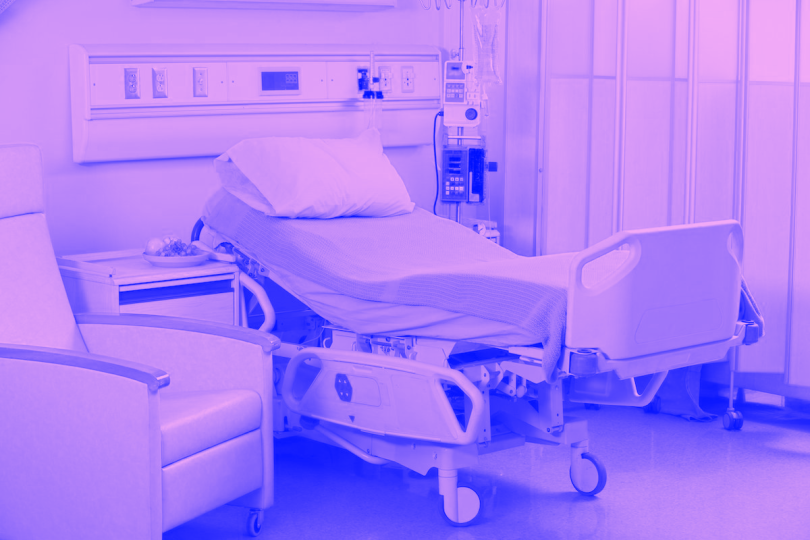Lately, nurses and doctors have appeared across social media and television talking about the lack of personal protective equipment and the dangers that they face going to work each day. The scarcity of ventilators has led to efforts across the country to make them more quickly. At the same time, patients with serious cases of COVID-19 continue to arrive at hospitals. COVID-19 patients occupy over 50 percent of beds at NewYork-Presbyterian Hospital, one of the largest hospitals in the United States. In Chicago, the Army Corps of Engineers and the Illinois National Guard are working on turning the largest convention center in North America into a clinic that will be able to handle 3,000 COVID-19 patients.
As the current CEO of OpenMarkets, a software company based in Chicago that acts as an intermediary between healthcare systems looking for medical equipment and the suppliers looking to sell them, Trevor Wood is seeing all these changes from a unique vantage point.
Openmarkets Health Marketplace
- Founded: 2011
- Headquarters: Chicago, IL
- Industry: Healthtech + Ecommerce

demand for equipment is rising rapidly
OpenMarkets has over 1,500 healthcare providers and 160 suppliers who use the platform across the country. Over the past several weeks, Wood has seen more users who had never used the platform before. And it’s not just ventilators that they are looking for.
“Ventilators, stretchers, IV poles, isolation carts and cabinets,” Wood said, listing off medical equipment that hospitals are looking for to deal with the surge of COVID-19 patients. “Once patients started coming in and patient volume started going up, new types of equipment became a necessity, like beds, wheelchairs to be able to get those patients in and out, stretchers.”
“Once patients started coming in and patient volume started going up, new types of equipment became a necessity, like beds, wheelchairs to be able to get those patients in and out, stretchers.”
Normally, hospitals looking to purchase equipment would have to contact suppliers individually and go through several back and forths to determine product availability and specifications. This can lead to a bottleneck in the procurement process, and make matters especially complicated now that healthcare providers are looking for equipment new, used or refurbished — wherever it can be found.
“It’s a crowded market, because a lot of the new stuff is sold out,” Wood said. “A lot of these hospitals are looking for short-term rentals to get through the crisis, or they’re looking for refurbished equipment, or they’re looking for all three. If you try to sit down and do that research on your own, that’s going to take hours and hours of time.”
Adjusting to new market conditions
Wood said OpenMarkets’ software can help hospitals cut down on time spent searching for the right equipment. Instead of spending time to find and reach out to individual sellers, hospitals are able to search for what they need in one location.
“If you compare that to a Google search — searching takes tons of time,” Wood said. “You’re going to get lost in the weeds very easily. In the current state, everyone has less time. Clinicians are now inundated with critical patients like they’ve never seen before. They certainly don’t have any time to pay any attention to supply chain. Supply chain is being hurried to buy things like they’ve never been before.”
“Clinicians are now inundated with critical patients like they’ve never seen before. They certainly don’t have any time to pay any attention to supply chain.”
Because its software was set up so that listing new items required minimal changes, the company’s team of 16 full-time employees was able to handle the demand increase in stride. Having a software-based product has also allowed OpenMarkets to adapt quickly to changes from COVID-19. Although OpenMarkets had never listed personal protective equipment (PPE) on its marketplace before, it was able to quickly pivot when it became obvious that was the right move.

“For four days I was telling our team, ‘We’re not doing PPE, we’re not doing PPE,’” Wood said. “And after a few conversations I had with industry folks, I made the decision that we’re going to start carrying PPE, and we flipped the switch. And within about two hours we had PPE live and available across OpenMarkets.”
Looking to the weeks ahead, Wood is getting ready for the medical equipment market to become even tighter. “We’ve got to continue to explore every nook and cranny of the supplier community,” he said. But he added that, if multiple locations see a jump in patient load as high as New York City, equipment inventory could have trouble meeting the demand.
“That’s why you see the need for flattening the curve and social distancing,” Wood said. “And that’s where we all need to do our part.”






